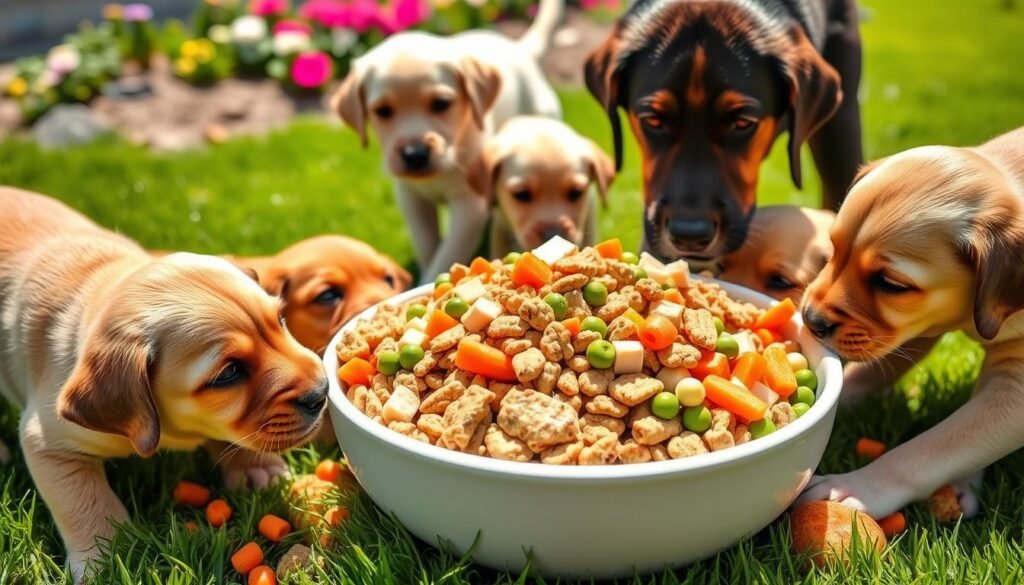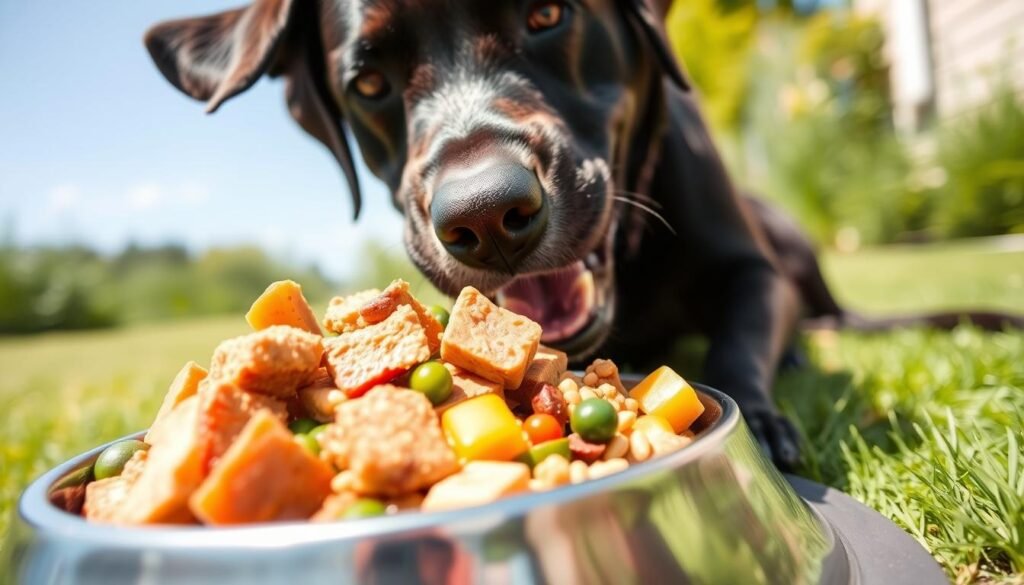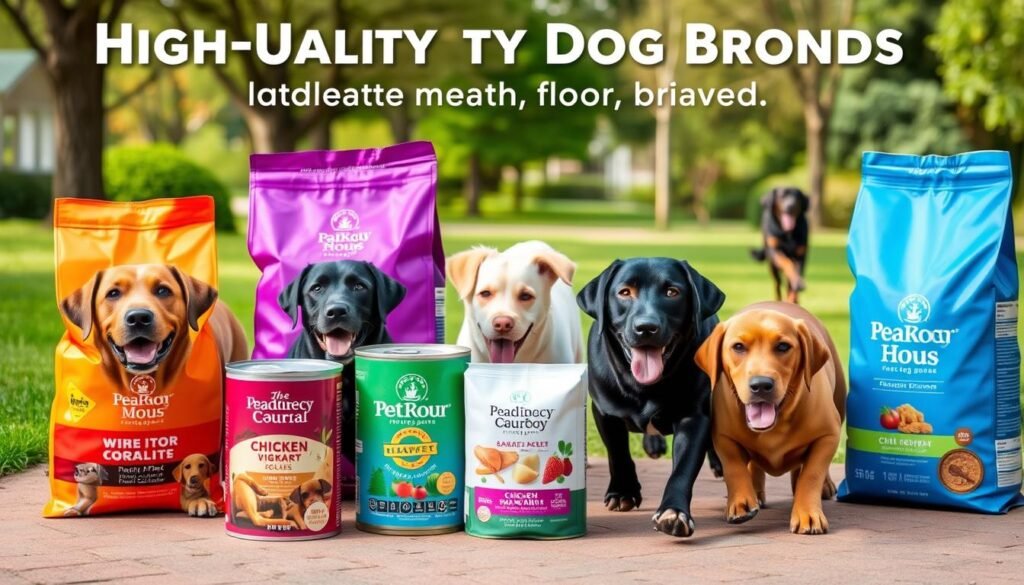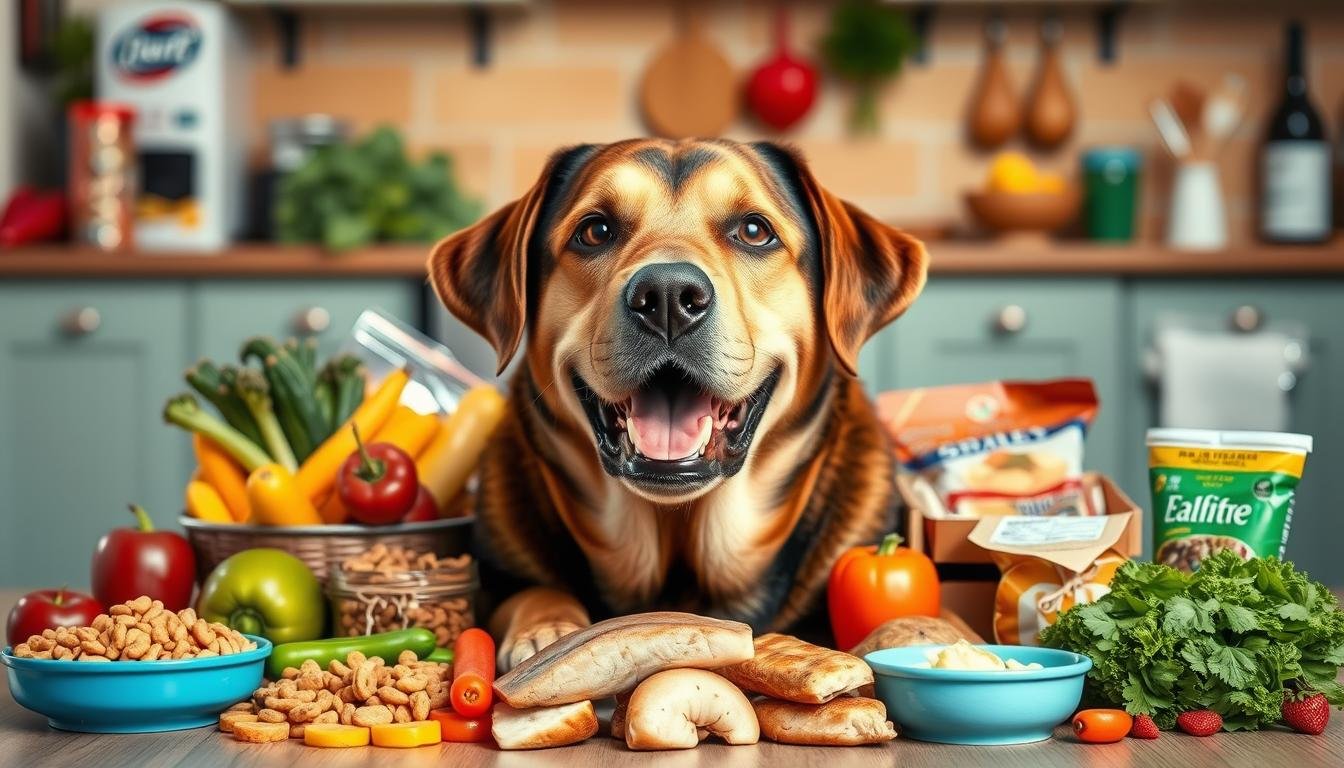The best and worst diets for Labrador Retrievers
As a Labrador Retriever owner, it’s vital to know their special diet needs. Labradors are big dogs, so their food needs are different from smaller breeds. They can get hip dysplasia if they eat too much calcium, which is bad for their size.
But, there are a few dog foods made just for Labradors. These foods help meet their important nutritional needs, whether they’re puppies or adults.
Feeding your Labrador the right food is key to keeping them healthy. In this article, we’ll look at the best and worst diets for Labradors. This will help you choose the best food for your furry friend.
Key Takeaways
- Labrador puppies have an increased risk of developing hip disease if fed a diet with too much calcium.
- Only a limited number of dog foods meet the specific nutritional requirements for Labrador puppies.
- Some Labrador puppies may not be ready to transition to adult dog food until they are 15 to 24 months old.
- Feeding the right diet is crucial for maintaining your Labrador’s health and preventing potential issues.
- Understanding the unique nutritional needs of Labrador Retrievers is key to keeping them healthy and happy.
Understanding Labrador Retrievers’ Nutritional Needs
As a Labrador Retriever owner, it’s key to meet their nutritional needs. This is vital for their health and happiness. Labradors need a diet rich in protein, fat, carbs, vitamins, and minerals. This diet supports their energy, growth, and overall health.
Importance of Balanced Diets
Feeding your Labrador a balanced diet is crucial. Quality proteins like chicken, beef, or fish help adult Labradors keep their muscles strong. Carbs and fats give them energy and support their body functions. A balanced diet also helps avoid obesity, a common issue for Labradors.
Life Stage Requirements
- Labrador puppies need special food to grow fast and strong. Puppy formulas give them the right nutrients for development.
- As Labradors get older, their diet needs change. Adult Labradors need less calories and more fiber to stay healthy and support their joints.
Knowing the Labrador Retriever nutritional needs and giving them a balanced diet for Labs helps them thrive. This is true for both Labrador puppies and adult Labradors.

The Best and Worst Diets for Labrador Retrievers
Choosing the right diet is key for your Labrador’s health. The best diets are high in protein, low in carbs, and full of healthy fats. Raw dog food, with fresh meat, bones, and organs, is often the best choice. It closely matches a dog’s natural diet.
But, high-quality kibble, whether grain-inclusive or grain-free, can also work well. It’s important that it meets a Labrador’s nutritional needs. Avoid diets high in carbs and fillers, as they can cause weight gain and health problems.
The worst diets for Labrador Retrievers are those with too many carbs, not enough protein, and artificial additives. These can lead to obesity, digestive issues, and other health problems.
Optimal Nutrition for Labrador Retrievers
The best diets for Labradors focus on:
- High-protein content for muscle health
- Healthy fats for energy and joint health
- Low-to-moderate carbohydrates to avoid weight gain
Grain-free dog food can be a good choice for Labs, as it avoids common allergens. But, make sure it’s balanced and meets your Lab’s nutritional needs.
“Consultation with a veterinarian or a certified canine nutritionist is highly recommended when choosing the best diet for your Labrador Retriever.”

By picking a high-quality, species-appropriate diet, your Labrador can thrive and live a long, healthy life.
Top Healthy Dog Food Brands for Labs
Choosing the right dog food for your Labrador Retriever is key. Look for brands that make food just for big dogs. Canidae, Wellness Core, Nom Nom, Taste of the Wild, and Nutro Ultra are great options.
Biologically Appropriate Raw Food (BARF) Diets
BARF diets are a great choice for Labradors. They include raw meat, bones, and organs. This diet is close to what dogs naturally eat, giving them lots of protein and nutrients.
High-Quality Kibble Options
There are also good kibble options for Labradors. Look for kibbles low in carbs and high in protein and fats. Wellness Core, Taste of the Wild, and Nutro Ultra make kibbles that meet big dogs’ needs.

“The best dog food for your Labrador Retriever should not only be tailored to their size and energy requirements, but also provide a balanced and nutrient-rich diet to support their overall health and well-being.”
Feeding Guidelines and Portion Control
Figuring out the right amount of food for your Labrador Retriever is key to keeping them healthy. Puppies need 4 meals a day until they’re about 6 months old. Adult Labradors usually do well with 2 meals a day. The exact amount depends on your dog’s age, weight, and how active they are, plus the type of dog food you use.
Guidelines based on weight can help you start. For example, a 40-45 pound Labrador might need 205-230 grams of food daily. A 70-75 pound Labrador could need 300-335 grams. It’s crucial to not overfeed and to keep an eye on your dog’s weight to ensure they stay healthy.
The schedule for feeding your Labrador Retriever is also important for their health. Puppies need 4 meals a day until they’re about 6 months old. Adult Labradors usually do well with 2 meals a day. Some Labradors might even prefer eating smaller, more frequent meals. By sticking to a consistent feeding routine and portion control, you can help your Labrador Retriever stay at a healthy weight and avoid obesity risks.

